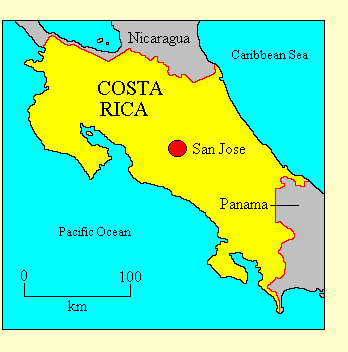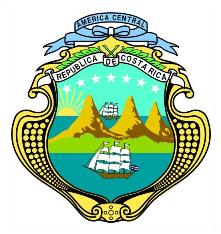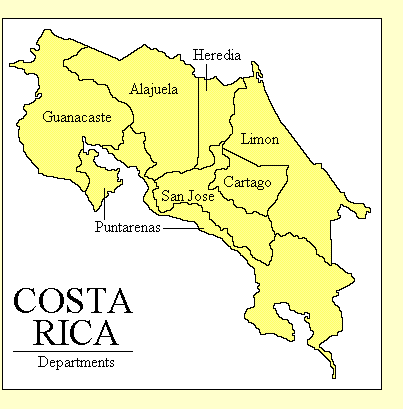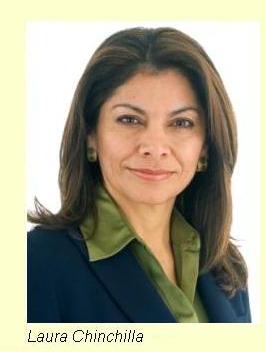

REPUBLIC OF COSTA RICA
• Official name: Republica de Costa Rica (Republic of Costa Rica)
• Location: Central America
• International organisations: Organisation of American States, United Nations, World Trade Organisation
• Borders: Nicaragua, Panama
• Coastline: Caribbean Sea, Pacific Ocean
• Land area: 51,100 Km2
• Population: 4,500,000
• Annual GDP (PPP) per capita: US$10,900 (2009 CIA estimate). World ranking: 78
• Ethnicity: Most of the population is of European (mainly Spanish) descent, although
many have some Amerindian descent. There are small Amerindian, African and Chinese
minorities.
• Languages: Spanish is the official language and is almost universally used. About 2%
speak Limonese, a Caribbean English creole.
• Religion: Catholic Christian 75%, Protestant Christian 15%.
• Form of government: Presidential democratic republic. Costa Rica is divided into
seven provinces.
• Capital: San Jose

• Constitution: The
Constitution of the Republic of Costa Rica came into effect on 7 November 1949.
• Head of state: The President, elected by direct universal suffrage for a
four-year term.
• Head of government: The President, who appoints all ministers.
• Legislature: Costa Rica has a unicameral legislature, the
Legislative
Assembly (Asamblea
Legislativa), which has 57 members, elected for four-year terms by proportional
representation from the provinces.

• Electoral authority: The Supreme
Election Tribunal administers national elections
• Freedom House 2011 rating: Political Rights 1, Civil Liberties 1
• Transparency International Corruption Index: 53% (41 of 178 countries rated)
• Reporters Without Borders Press Freedom 2010 Index: 91.9% (29 of 178 countries rated)
• Heritage Foundation Economic Freedom 2010 Index: 67.3% (49 of 178 countries rated)
Political history
The Caribbean coast of what is now Costa Rica was discovered and named by Columbus in
1502 and the country was incorporated into the Spanish captaincy-general of Guatemala in the late 16th
century. The area was an isolated backwater of Spanish Central America for 300 years. With the
end of Spanish rule in 1821
it became part of the Central American Federation, becoming an independent
republic when the federation broke up in 1838.
Like its neighbours, Costa Rica
was dominated by civil disorder and conflict between conservatives and liberals
throughout the 19th century, but the presidency of Rafael Yglesias Castro (1894-1902)
marked a transition to democratic government. Despite political crises in 1917, 1919 and
1948, Costa Rica maintained constitutional government through the 20th century,
partly because it had the good sense in 1948 to abolish its army.
Since 1948 politics in Costa Rica have been dominated by the left-wing
National Liberation Party, whose leader
Jose Figueres Ferrer was president three times between 1948 and 1974. Its main
opposition has been the
Christian Party of
Social Unity, a moderate Christian democratic party. Minor parties include the
Citizens' Action Party and the
Libertarian Movement.
At the 2006 presidential election, the National Liberation Party candidate, Oscar Arias Sanchez
was narrowly elected. In 2010 the NL retained the presidency when
Laura Chinchilla Miranda was elected
as Costa Rica's first female President.
Updated November 2011
|


